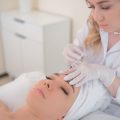A Generation Embracing Prevention
There’s a fresh breeze sweeping across the British beauty landscape, and it’s being carried by young Britons who are redefining what it means to look after themselves. Rather than waiting for the tell-tale signs of ageing to appear, this generation is championing preventative injectables—think subtle doses of Botox or fillers—not as a dramatic fix, but as an early, gentle nudge towards maintaining their natural features. Gone is the taboo that once surrounded cosmetic treatments; instead, there’s an open conversation about “tweakments” over coffee with friends or in candid social media posts. It’s a move from correction to careful prevention, reflecting a uniquely British sensibility: understated, practical, and quietly confident. The emphasis isn’t on chasing perfection, but on preserving one’s individual charm and slowing down time before lines become etched memories. This cultural shift signals not just a change in beauty ideals, but also in attitudes toward self-care and wellbeing—a story unfolding in clinics from London to Manchester, where prevention is now considered the smartest form of self-love.
Understanding Preventative Injectables
In recent years, the term “preventative injectables” has become a buzzword among young Britons, especially those keen to preserve their youthful glow and delay visible signs of ageing. But what exactly are preventative injectables, how do they work, and why have they found such a loyal following across the UK?
What Are Preventative Injectables?
Preventative injectables refer mainly to treatments like Botox and dermal fillers administered before deep lines or wrinkles have set in. Instead of waiting for crow’s feet or frown lines to become pronounced, many people in their twenties and early thirties are opting for these procedures as a pre-emptive measure. The goal is not to alter one’s appearance dramatically but rather to slow down the natural ageing process by targeting facial muscles and supporting skin structure.
How Do They Work?
The science behind preventative injectables is fascinating yet straightforward. Botulinum toxin (commonly known as Botox) temporarily relaxes specific facial muscles that cause expression lines, preventing the formation of deeper wrinkles. Dermal fillers, on the other hand, plump up areas where volume loss might occur as we age, such as the cheeks or under the eyes. Here’s a quick breakdown:
| Type | Main Ingredient | Primary Use | Typical Age Group |
|---|---|---|---|
| Botox | Botulinum Toxin | Smooths dynamic wrinkles (e.g., forehead lines) | Mid-20s to early 30s |
| Dermal Fillers | Hyaluronic Acid | Adds volume, softens static lines | Late 20s onwards |
Why Are Young Britons Embracing Them?
The popularity of preventative injectables among young adults in the UK can be attributed to a blend of self-care culture, social media influence, and British pragmatism about ageing well. There is less stigma attached to cosmetic treatments today; instead, they are seen as an extension of personal grooming—akin to skincare routines or dental check-ups. Influencers and celebrities openly discussing their experiences have normalised these choices, while clinics across London, Manchester and beyond offer tailored plans to suit individual needs.
A Modern Staple in Self-Care Routines
The appeal lies in subtlety and maintenance rather than transformation. For many young Britons, investing in preventative injectables is about feeling confident and empowered. It’s a gentle nudge towards looking after oneself—a trend that fits seamlessly with the UK’s broader wellness movement. In essence, these procedures have moved from being a hush-hush luxury to a celebrated part of modern self-care culture.
![]()
3. Cultural Influences and Influencers
It’s impossible to talk about the surge in preventative injectables among young Britons without touching on the profound influence of British pop culture, social media trends, and our homegrown beauty icons. Over the last few years, we’ve seen a dramatic shift: what was once whispered about behind closed doors is now openly discussed in everything from Love Island confessionals to TikTok GRWM (Get Ready With Me) videos. The normalisation of injectables has been fuelled by UK reality TV stars, influencers, and even musicians who are refreshingly candid about their tweakments. Their openness not only demystifies the procedures but also reframes them as a form of self-care rather than vanity.
The ripple effect of these cultural touchpoints is immense. When familiar faces like Molly-Mae Hague or Maya Jama share their skincare routines and subtle enhancements, it resonates with younger audiences who see themselves reflected in these personalities. The British sense of humour and self-deprecation often comes into play as well—injectables are discussed with a wink and a nudge, making the topic feel approachable rather than intimidating or taboo.
Moreover, social media platforms like Instagram and TikTok have become virtual beauty salons for Gen Z and Millennials across the UK. Hashtags such as #BabyBotoxUK or #PreventativeInjectables fill feeds with before-and-after shots, honest reviews, and live demonstrations from local practitioners. These trends set new standards for transparency and create communities where young people can share their journeys, ask questions, and seek recommendations from peers who understand the nuances of British beauty ideals.
In essence, the rise of preventative injectables isn’t just about changing faces; it’s a reflection of how British youth are rewriting the rules around beauty, authenticity, and self-expression in a digital age—one subtle enhancement at a time.
4. Navigating the British Aesthetic
When it comes to aesthetic treatments, there is something distinctly British about the approach that sets it apart from trends abroad, particularly those seen in the US or parts of Europe. The hallmark of the British style is a ‘less is more’ philosophy—an attitude that prioritises subtlety and natural-looking results over obvious transformations. This preference for understated enhancements has become a defining feature among young Britons exploring preventative injectables.
Unlike more dramatic approaches, where fuller lips and pronounced cheekbones are often celebrated, many Brits seek tweaks so delicate they are barely perceptible to the casual observer. The goal isn’t to look “done,” but rather to appear well-rested, fresh-faced, and quietly confident. Both practitioners and clients work collaboratively to achieve this careful balance, relying on open communication, honest consultations, and a shared aesthetic sensibility.
How Practitioners and Clients Achieve Subtle Enhancements
Practitioner Techniques |
Client Preferences |
|---|---|
| Low-dose injections for gradual change | Avoiding drastic alterations |
| Emphasis on symmetry and facial harmony | Preferring treatments that enhance natural features |
| Thorough pre-treatment consultations | Requesting transparency about expected results |
| Use of advanced mapping techniques | Pursuing long-term maintenance over one-off procedures |
This mutual understanding between practitioners and their young clientele fosters trust, encouraging a holistic approach that considers not just physical appearance but also confidence and self-perception. In my own experience, the best results come from those little touches—the sort that prompt compliments like “You look well!” rather than questions about what’s changed. Ultimately, navigating the British aesthetic is about celebrating individuality with restraint, allowing each person’s natural beauty to quietly shine through.
Regulations, Safety, and Peace of Mind
If you’re considering preventative injectables in the UK, understanding the legal and safety framework is a must for both peace of mind and your own wellbeing. The world of aesthetic treatments has evolved rapidly, but the British approach remains rooted in careful regulation and transparency.
The Legal Landscape: Who Can Administer Injectables?
In the UK, it’s not enough to simply have a steady hand—by law, only qualified medical professionals such as doctors, dentists, nurses, and pharmacists with additional training can administer prescription-only injectables like Botox. It’s illegal for non-medical practitioners to carry out these procedures. For fillers, while the laws are less stringent, choosing a medically trained provider is highly recommended to ensure safety and professionalism.
Clinic Standards and Accreditation
Reputable clinics are registered with regulatory bodies such as the Care Quality Commission (CQC) in England or Healthcare Improvement Scotland (HIS). These accreditations ensure that providers meet high standards for hygiene, equipment, and patient care. If you walk into a clinic with glossy interiors but no visible certification, it’s best to ask questions—or walk away.
Your Safety Checklist
For newcomers curious about injectables, there are a few golden rules to follow: always verify your practitioner’s credentials; never feel pressured into making a decision on the spot; ask about potential side effects and aftercare; and make sure your chosen clinic is properly accredited. The best practitioners will prioritise an open conversation about realistic outcomes and risks—so you can step forward with confidence.
Ultimately, Britain’s regulatory structure is designed to protect you from harm and support your journey towards self-care. By staying informed and choosing wisely, you’ll be able to embrace preventative injectables as part of your wellness routine—with both beauty and safety in mind.
6. Personal Reflections and Real Experiences
When it comes to preventative injectables, the most compelling insights come from those who have genuinely walked this path. I’ve spoken with several young Britons who candidly shared their journeys, each with a unique perspective that goes beyond glossy Instagram feeds or influencer endorsements. For Emily, a 27-year-old marketing executive in Manchester, her first encounter with preventative Botox was tinged with nerves and excitement. “I wasn’t trying to erase anything—I just wanted to feel confident as I got older,” she confided. She described the anticipation before her appointment: “It felt like a rite of passage, something my friends and I had been curious about for ages.”
Meanwhile, Tom, a 25-year-old Londoner working in tech, approached his decision after months of research. “I saw mates around me starting early—not because they were vain, but because they wanted to look like themselves for longer. There’s less stigma now; it’s almost part of our self-care routine.” Tom emphasised how open conversations with his practitioner helped him set realistic expectations and avoid the frozen expressions he’d feared.
There’s also the emotional side—Jas, a postgraduate student from Bristol, told me about feeling empowered by taking control of her appearance. “There was this moment when I looked in the mirror and saw myself, just a fresher version. It wasn’t about looking different—it was about feeling proactive.” Yet, she admitted to initial doubts: “You always wonder what people might say or think. But honestly, more friends were interested than judgemental.”
What resonates across these stories is an underlying desire for authenticity and self-assurance, rather than perfection. Young Britons are navigating preventative injectables as an expression of self-care, balancing hopes for subtle enhancements with honest discussions about risks and outcomes. Their journeys reflect not only changing beauty ideals in the UK but also a growing comfort with prioritising personal wellbeing over outdated taboos.

